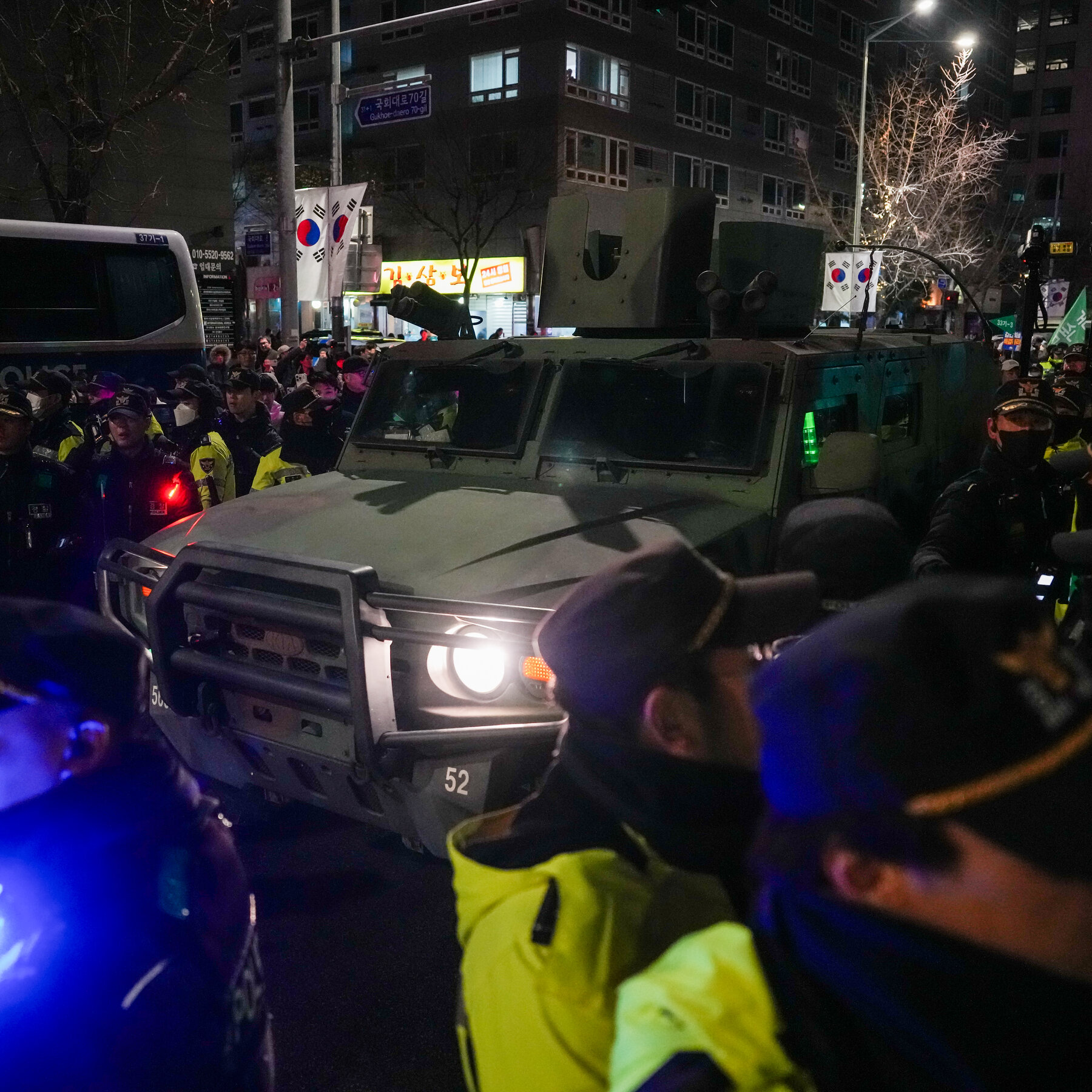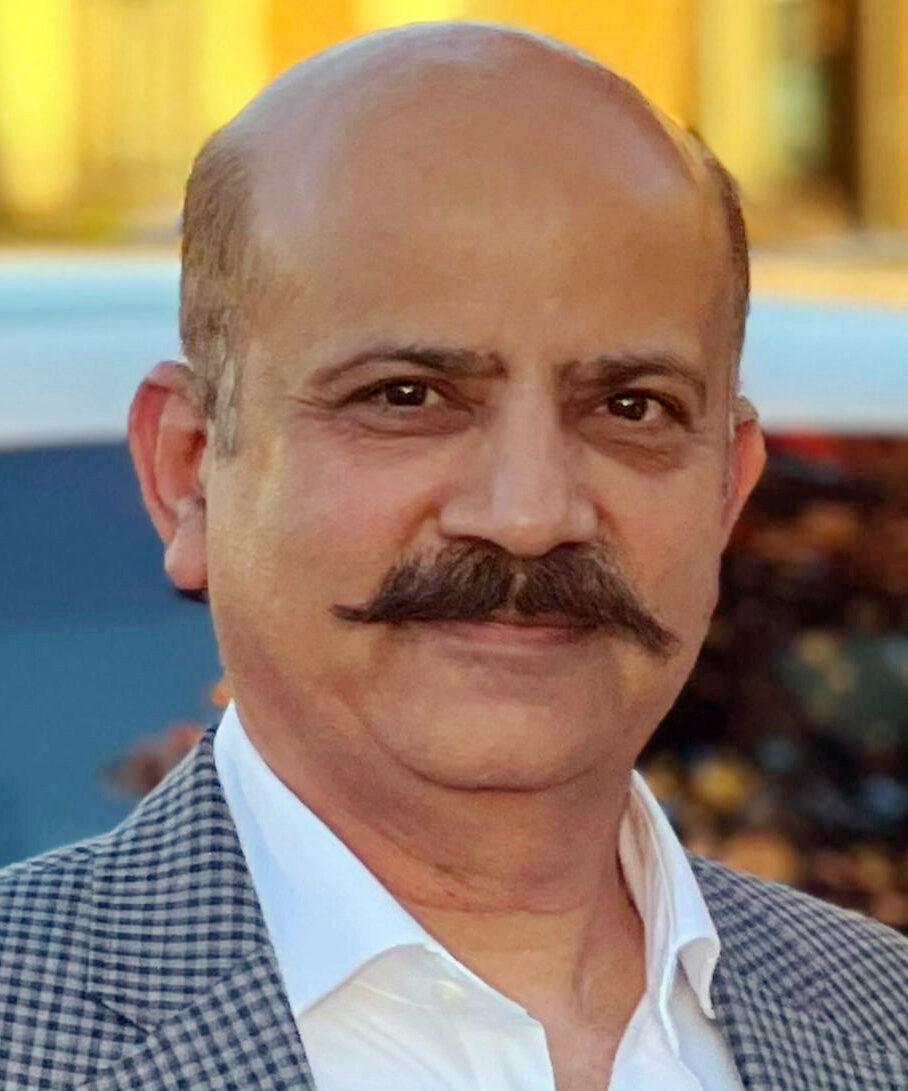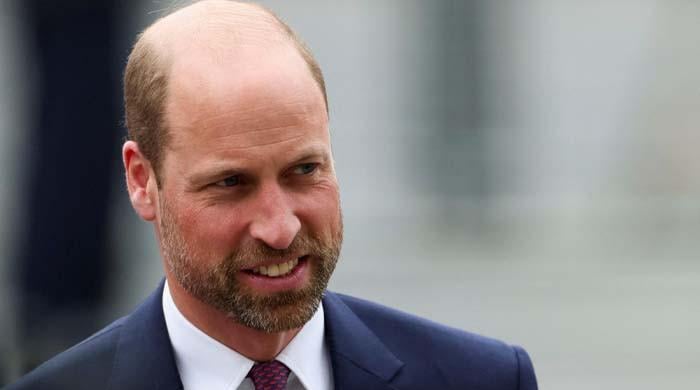Live Updates: South Korean Military Leaders Describe Confusion During Failed Crackdown

![]()
South Korean officials on Thursday gave the first inside account of the extraordinary step by the president to declare martial law this week, signaling that the move had caused disagreement, surprise and confusion among top military officials.
The South Korean general whom President Yoon Suk Yeol named martial law commander testified before lawmakers that he learned of the move only when Mr. Yoon announced it on television.
Despite his position, the general, Park An-su, also told the parliamentary committee that he did not know who ordered troops to move in on the National Assembly in an attempt to cordon it off. Later in the day, Gen. Park said he had offered to resign, and that his offer was under review by the Defense Ministry. The questioning lasted hours and appeared tense at times as lawmakers raised their voices in frustration.
The deputy defense minister, Kim Seon-ho, testified that the defense minister had ordered the troops in. Mr. Kim said he had opposed the mobilization. The defense minister, Kim Yong-hyun, resigned Thursday before the hearings and did not testify.
The hearings were an inquiry into why martial law was declared for several hours on Tuesday night. Mr. Yoon’s extraordinary move plunged the country into a political crisis, caused widespread anger and drove thousands of protesters to the streets. Mr. Yoon has not been seen in public or made a public statement since the early hours of Wednesday.
The National Assembly is scheduled to vote on Saturday on whether to impeach Mr. Yoon. Opposition lawmakers have a majority in the legislature, but an impeachment motion needs a two-thirds vote to pass. That would require some support from members of Mr. Yoon’s party. The opposition is hoping to take advantage of mass demonstrations scheduled for Saturday to create extra pressure as the vote takes place.
Here’s what else to know:
-
Mr. Yoon has been struggling with abysmal approval ratings for months. One of the first nationwide opinion polls conducted after the martial law declaration suggested overwhelming public disapproval of the move. More than 70 percent of South Koreans are in favor of impeaching him, according to the poll conducted by Realmeter, based in Seoul.
-
Protests entered a third night, as hundreds of people gathered outside City Hall in downtown Seoul on Thursday. Unions, student groups and the opposition have called for a large protest in Seoul on Saturday to coincide with the National Assembly’s impeachment vote.
It’s finals season at universities in South Korea. But Jun Ho Cho, 19, a computer science major, showed up at the protest in Seoul anyway, saying he was angered by President Yoon’s martial law declaration. “You need a country to study in, right?” he said. In elementary school he watched the 2016 rallies against former President Park Geun-hye from the sidelines, and he wanted to come out this time.
Li Ho, an artist in her 40s who was at the protest in Seoul, said she rarely paid attention to the news, doesn’t have a TV and didn’t join the hundreds of thousands who demonstrated for the former President Park Geun-hye’s ouster in 2016. “But she didn’t declare martial law,” Ho said, holding a protest sign she painted the morning after President Yoon’s martial law declaration. “The person in the presidency’s gone crazy.”
President Yoon’s brief imposition of martial law has motivated an intergenerational crowd to show up at the protest in Seoul. Unlike the many routine protests in the city’s center that are dominated by retirees, tonight’s rally has drawn a vibrant cross-section of the city, grandparents standing shoulder to shoulder with students and parents with children.
Image
As the workday ends in Seoul, hundreds of demonstrators are converging on a square near City Hall to call for President Yoon Suk Yeol’s removal from office. The ground is slick with earlier rain, so people are having to stand as they hold up their candles — a perennial feature of such gatherings in South Korea.
Lawmakers grilled Army Gen. Park An-su, who was designated to lead the martial law command, for hours in a National Assembly committee hearing on Thursday. When some lawmakers urged him to resign, General Park said he had already offered to do so on Wednesday and that it was under review by the defense ministry.
When South Koreans saw footage of troops clashing with civilians while breaking into the country’s National Assembly this week, many recalled the military’s actions during a political crisis in 1980.
This week, nearly 300 South Korean troops stormed the assembly during the six hours that President Yoon Suk Yeol imposed martial law. The public saw their actions as an attempt to arrest the lawmakers inside, who eventually voted to nullify the declaration and force Mr. Yoon to rescind it.
In May 1980, the turmoil lasted longer and turned deadly. Old photos evoke the chaos, violence and defiance of the time.
The unrest that year was set off by a martial law declaration by Chun Doo-hwan, a military dictator who had seized power in a 1979 coup. Political activities were banned, schools were closed, and dissidents were arrested.
Lots of ordinary people resisted. One photo (bottom right) shows thousands of students rallying on the campus of Seoul National University on May 2, 1980. They were demanding the lifting of martial law, and the resignation of the country’s prime minister and its intelligence chief.
Another photo from Seoul (top left) shows police vehicles spraying tear gas at a crowd of student demonstrators on May 15, 1980. Police officers in riot gear walk behind the vehicles in formation.
That month, troops wielding batons and bayonets opened fire on pro-democracy protesters in the southwestern city of Gwangju. That massacre would become a pivotal moment in the country’s transition to democracy and a lingering trauma for generations of South Koreans, including the Nobel Prize-winning novelist Han Kang.
During the 10-day Gwangju uprising, the military seized control of the news media and bludgeoned students on streets thick with tear gas. The crackdown left hundreds killed or missing.
In the photo at the top right, from May 27, 1980, armed soldiers lead captured people through the streets after a firefight. The photo below that shows soldiers laying a roadblock the day before on a street leading to Gwangju’s downtown.
The photo at the bottom left shows a blood-splattered student being clubbed by a paratrooper medic in Gwangju on May 20, 1980. The photo was the first to slip through the military cordon around the city, and it helped expose the military’s brutal suppression of the uprising.
For years, the photojournalist who captured the image, Na Kyung Taek, did not take credit for it. He feared reprisals from the military junta and its leader, Mr. Chun, whose rule ended in 1988.
Earlier this year, Mr. Na told The New York Times that he had one regret about his work during the Gwangju uprising.
At one point, he heard a captain repeating an order that came through the radio to shoot into crowds, he recalled. He fled for his life, with his cameras hidden under his shirt.
“I should have taken out my camera,” he said. “Although if I had, I probably wouldn’t be here.”
![]()
Zuzanna Piekarska
A group of South Korean military veterans held a demonstration outside the presidential office in Seoul on Thursday, calling for President Yoon to be impeached. Some shaved their heads, a longstanding protest tradition in South Korea, especially among dissidents during the decades of military dictatorship.
Image
South Korea’s markets remain under pressure. The country’s benchmark index fell for a second day, losing 0.9 percent, with big banks again among the hardest-hit shares. The won was steady against the dollar, settling at a level about 1 percent weaker than when martial law was announced on Tuesday.
How many South Korean won a U.S. dollar buys
South Korea’s finance minister, central bank governor and other senior regulatory officials have promised to support markets and pledged to hold “emergency” meetings every morning until conditions stabilize. They said after Thursday’s meeting that investors should act “calmly” and not be “overly anxious.”
![]()
Qasim Nauman
Reporting from Seoul
President Yoon has struggled with abysmal approval ratings for months, and one of the first nationwide opinion polls conducted after his martial law declaration suggested overwhelming public disapproval of his move. More than 70 percent of South Koreans are in favor of impeaching him, according to the survey by Realmeter, a polling company in Seoul.
The vote to impeach President Yoon will take place on Saturday at around 7 p.m., said Jo Seounglae, a spokesman for the opposition Democratic Party. Mr. Jo said the schedule would allow the public and members of the ruling People Power Party to reflect on what he described as an “unconstitutional coup.”
![]()
Qasim Nauman
Reporting from Seoul
There was no sign on Thursday morning that the protests demanding President Yoon’s impeachment would end. Thousands of people participated in peaceful gatherings on Wednesday, with some going late into the night. At least one major protest is planned in downtown Seoul on Thursday afternoon.
Image
Army Gen. Park An-su told a parliamentary committee on Thursday that he learned of the martial law only when President Yoon declared it on television. General Park also said he did not know who ordered the troops to go into the National Assembly building, even though he was the martial law commander.
Image
South Korea’s president, Yoon Suk Yeol, announced on Thursday that he had accepted the resignation of his defense minister, the first member of Mr. Yoon’s cabinet to lose his job since the president’s short-lived declaration of martial law on Tuesday night stunned the country.
The defense minister, Kim Yong-hyun, had tendered his resignation on Wednesday, saying that he considered himself responsible for the crisis that the martial law decree had created for Mr. Yoon’s government. He did not directly address allegations among opposition lawmakers and local media that he had suggested the idea to Mr. Yoon.
A statement from the presidential office said that Mr. Kim would be replaced by Choi Byung Hyuk, a retired army general who has been serving as South Korea’s ambassador to Saudi Arabia.
Mr. Yoon withdrew the martial law declaration early Wednesday morning, after the National Assembly voted unanimously against it and protesters gathered to denounce the move. Opposition lawmakers later introduced a motion to impeach Mr. Yoon, which could be voted on as soon as Friday.
If two-thirds of the 300 lawmakers in the National Assembly vote for the motion, Mr. Yoon will be impeached and suspended from office until the country’s Constitutional Court makes a final ruling on whether to reinstate or remove him. All 192 opposition lawmakers support impeachment, but they need at least eight votes from members of Mr. Yoon’s People Power Party to impeach him.
The head of that party, Han Dong-hoon, said on Thursday that he would try to persuade its lawmakers to vote against impeachment, to prevent what he called national “confusion.”
But at the same time, Mr. Han tried to distance the party from Mr. Yoon, calling his martial law decree “unconstitutional” and demanding that he give up his party membership. Mr. Han also said that military leaders who were involved in imposing martial law must be removed from their posts. He did not identify any commanders by name.
“We must show to the military that if they get involved in an unconstitutional and illegal martial law, they will be punished immediately,” Mr. Han said.
Gen. Park An-su, the army chief of staff, led the martial law command during the several hours before the decree was rescinded. Hundreds of troops were sent into the National Assembly in what opposition lawmakers called an “illegal” and “unconstitutional” attempt to stop them from voting against the decree. Staff members barricaded hallways with furniture and used fire extinguishers against troops to keep them from entering the voting chamber.
Mr. Kim, the outgoing defense minister, said the troops had been following his orders when they entered the National Assembly. Mr. Yoon has insisted that martial law was needed to protect the country from disruptive political opposition that had paralyzed his administration.
Image
When President Yoon Suk Yeol of South Korea visited the White House last year, he charmed the Washington establishment by singing Don McLean’s “American Pie.” When he flew to Tokyo to usher in a new era of conciliation with Japan, it was a genial visit, with the prime minister treating Mr. Yoon to “omurice,” a Japanese dish that the South Korean leader likes.
But that mood was gone on Wednesday, a day after Mr. Yoon imposed — and then rescinded — martial law in South Korea. Officials in the United States and Japan were scrambling to understand why the leader they’d both embraced had made such a shocking authoritarian move.
Now, the domestic political chaos unleashed by Mr. Yoon could imperil the countries’ three-way alliance in the Pacific, where they had been fortifying their relationships to confront an increasingly assertive China and North Korea.
The disorder in South Korea — where cabinet members on Wednesday were offering to resign and opposition lawmakers were moving to impeach Mr. Yoon — comes on top of political uncertainty in both the United States and Japan. Last month, former President Donald J. Trump, a notoriously mercurial leader who tried to undermine American alliances while in power, was elected to a second term.
And in October, Japanese voters delivered a resounding blow to the longtime governing party and the new prime minister, Shigeru Ishiba, denying them a majority in Parliament.
“Many in the world were counting on Japan and South Korea, along with Australia and others, to keep the flag flying and keep the head of good governance and democracy above water in the face of this incredible pressure from North Korea, China and Iran and Russia,” said Daniel Russel, a vice president at the Asia Society who was the assistant secretary of state for Asia under President Barack Obama.
Image
Before Tuesday, most international policy experts had been far more concerned about unpredictability in Washington. During Mr. Trump’s first term as president, he often accused South Korea and Japan of siphoning off American military resources, even threatening to pull troops out of South Korea. And at pomp-filled summits in Singapore and Hanoi, he engaged the North Korean leader, Kim Jong-un, in direct personal diplomacy, trying and failing to reach a deal on reducing the North’s nuclear arsenal.
Now, it is not only Mr. Trump’s return to power that makes the three-way alliance look volatile.
“Yoon’s self-inflicted wounds, combined with the now-weakened Japanese leadership, leaves the U.S. with two weak players in pushing back against China,” said Bruce Klingner, a senior research fellow for Northeast Asia at the Heritage Foundation in Washington. Just a few months ago, Mr. Klingner said, “the potential weak link was changes in U.S. policy.”
The events of Tuesday night in Seoul are already yielding ripple effects. American and South Korean military officials have postponed a high-level meeting to discuss nuclear deterrence issues.
Japan’s defense minister, Gen Nakatani, said he “would like to keep a close eye on how the situation develops” before confirming a visit to South Korea. Mr. Ishiba, the prime minister, who had been discussing a January trip to Seoul, said he was monitoring the situation with “grave interest.”
Image
One reason the three-way alliance now looks so fragile is that, to some extent, it has depended on the personalities and priorities of the countries’ leaders. Convivial photos of Mr. Yoon, then-Prime Minister Fumio Kishida of Japan and President Biden at a summit last year at Camp David, looking casual without neckties, suggested a friendly bond between them.
“There was certainly an element of serendipity in the group of leaders who were committed to all of this,” said Christopher Johnstone, a senior associate at the Center for Strategic and International Studies and a former director for East Asia on the National Security Council in the Biden administration.
With Mr. Trump’s return to the White House just weeks away, the next political turnover could happen in Seoul if the motion to impeach Mr. Yoon passes. Analysts predict he would be succeeded by his main rival, Lee Jae-myung, leader of the liberal Democratic Party, which could shift South Korea’s foreign policy stance. Mr. Lee’s party has typically shied away from close relations with the United States and with Japan, with which South Korea has long-running tensions stemming from Japan’s colonial occupation of the Korean Peninsula.
A government under Democratic Party leadership would be “more likely to want to hedge between China and the U.S. and downplay the importance of trilateral security cooperation with Tokyo and Washington,” Lauren Richardson, a lecturer in international relations at Australian National University, wrote in an email.
Image
In many ways, the relationship between Japan and South Korea is the most important link of the three-way alliance, said Ji-Young Lee, a professor of international relations and Korean studies at American University in Washington, who credited Mr. Yoon with pushing for the rapprochement with Japan despite some public opposition.
The stronger trilateral relationship was made possible in the first place because of improved relations between Japan and South Korea, Ms. Lee said. “It was primarily the work of Yoon Suk Yeol and his desire to improve relations with Japan, and if you take that out of the picture, then you are really talking about a great deal of uncertainty for the future of Japan-Korean relations,” she added.
There were signs of fragility in that relationship just last month, when South Korean officials boycotted a ceremony organized by Japan to commemorate workers at gold mines on Sado Island. South Korea has long protested the fact that Japan has not acknowledged or apologized for the conscription of Koreans during World War II to work in the mines, which were recently designated a UNESCO World Heritage Site.
Kunihiko Miyake, a former Japanese diplomat, said he hoped the two governments, regardless of who was in charge, would continue to build on the recent efforts to improve relations, if only to survive the struggle for supremacy between the United States and China.
South Korean officials “know the reality — their population is shrinking, their economy is bad and they cannot count on the Americans and they can’t count on the Chinese,” said Mr. Miyake. “So we need to work together — the Japanese and the Koreans.”
Despite the developments in Seoul, uncertainty in Washington could still be the bigger risk, analysts say. “The biggest elephant is the United States,” said Nobukatsu Kanehara, a professor of political science at Doshisha University in Kyoto. The trilateral partnership consists of “a whale plus two dolphins,” he added.
Mr. Kanehara said he feared that Mr. Trump, who prefers “strong men,” might regard both Mr. Yoon, if he lasts until Mr. Trump’s inauguration, and Mr. Ishiba of Japan as weak leaders.
Some analysts said Mr. Trump’s return was not the only issue for American policy in Asia. By not forcefully condemning Mr. Yoon’s declaration of martial law, the Biden administration showed “the gap between our rhetoric and the reality of our actions,” said David C. Kang, a senior fellow at the Quincy Institute for Responsible Statecraft, a research group in Washington.
“We’re willing to say we love rule of law and democracy and everything else, but we will just blatantly ignore this kind of behavior because the guy is on our side,” Mr. Kang said. “But the rest of the world is not stupid. They see this, and they are very skeptical of the U.S. administration.”
Kiuko Notoya contributed research.
Image
President Yoon Suk Yeol of South Korea was elected in March 2022 by a margin of just 0.8 percentage points, a victory seen more as a rejection of his liberal predecessor than as an endorsement of him or his campaign.
Since then, Mr. Yoon’s approval ratings have slumped amid a series of crises and scandals, culminating in his attempt to impose martial law on Tuesday in response to government gridlock. Mr. Yoon quickly backed down Wednesday morning, but the move prompted South Korea’s political opposition to begin impeachment proceedings against him.
Here are some of the most high-profile controversies of his tenure:
An insult goes viral.
Within four months of Mr. Yoon’s taking office, five of his cabinet-level appointees had resigned amid accusations of ethical lapses.
Then, in September 2022, he was caught on a hot mic and seen on camera apparently insulting U.S. lawmakers after meeting President Biden in New York. A spokeswoman for Mr. Yoon said he had been talking about South Korean lawmakers, not Americans. But many of Mr. Yoon’s critics rejected that assertion.
A Halloween crowd crush kills dozens.
On Oct. 29, 2022, a crowd crush at a Halloween celebration in one of Seoul’s most popular nightlife districts killed 158 people. Official documents and parliamentary testimony showed that the South Korean authorities had ignored or missed several opportunities to prevent the disaster.
The Seoul metropolitan police chief at the time, Kim Kwang-ho, told Parliament that the force had been “significantly focused” on the government’s antidrug efforts when asked whether that campaign had distracted officials from ensuring crowd safety. Mr. Yoon, facing calls to resign, blamed the police and other agencies for failing to predict the crush.
In the aftermath of the tragedy, the government insisted it was not responsible for ensuring public safety on the streets. Mr. Yoon ignored demands from victims’ families to fire top safety officials. He also dismissed requests for a meeting with the relatives of the dead and refused to issue an apology.
The first lady accepts a Dior pouch.
Hidden camera footage released by local news media in late 2023 showed Mr. Yoon’s wife, Kim Keon Hee, accepting a $2,200 Dior pouch as a gift, apparently violating a ban on government officials and their spouses accepting gifts worth more than $750.
In a survey in December 2023, a majority of South Koreans said they thought it was inappropriate for Ms. Kim to have accepted the gift. Ms. Kim appeared to deny claims of wrongdoing, according to local news media. Some officials from Mr. Yoon’s People Power Party called the incident a “trap” designed to influence parliamentary elections in April. Prosecutors decided not to charge Ms. Kim over the gift in October, local media reported.
A marine’s death is scrutinized.
Earlier this year, after a 20-year-old member of the South Korean Marine Corps was killed during a rescue mission, a military officer accused the Defense Ministry of whitewashing the inquiry under pressure from Mr. Yoon.
The marine, Lance Corporal Chae Su-geun, died while looking for missing residents in waist-high floodwaters in 2023, and the inquiry found that his team was ill-equipped for the task.
The accusation was the first major political crisis for Mr. Yoon since his party’s major defeat in parliamentary elections in April and raised the possibility that the president could face impeachment proceedings. In July, Mr. Yoon vetoed a bill that would have mandated a special counsel investigation into the allegations that his office and senior military officials interfered in the inquiry, calling it politically motivated.
Image
When President Yoon Suk Yeol of South Korea shocked the nation by declaring martial law, he placed news organizations under the rule of military command and outlawed “fake news.” It was a striking escalation of his long-running feud with media critical of his administration.
But when faced with censorship by the military, the Korean press did not acquiesce. News organizations spanning the political spectrum — even right-leaning publications more aligned with Mr. Yoon’s conservative People Power Party — stood united in criticism of his actions and any efforts to limit a free press.
Mr. Yoon, a former prosecutor, described his decision to declare martial law late on Tuesday as an act “of national resolve against the anti-state forces that are trying to paralyze the essential functions of the state and disrupt the constitutional order of our liberal democracy.” As part of the declaration, the South Korean military issued a decree prohibiting “fake news, public opinion manipulation, and false propaganda,” placing all media and publications under its control.
While Mr. Yoon reversed the declaration about six hours later, it offered a glimpse of the risks posed by years of challenges to press freedoms in South Korea by the country’s political leaders.
An editorial in Chosun Ilbo, one of South Korea’s biggest daily newspapers with a conservative leaning, called the president’s actions an international “embarrassment.” Mr. Yoon needed to answer to the public on how he intended to “take responsibility” for this situation, it added.
“How can the current situation justify restricting the basic rights of citizens?,” the paper wrote.
In the liberal Hankyoreh, an editorial declared: “The Republic of Korea’s biggest security risk is ‘Yoon Suk Yeol.’”
Chun Young-sun, managing editor of Korea JoongAng Daily, the English-language edition of daily newspaper JoongAng Ilbo, said there were no guidelines for how to react when the government declares martial law because it had not happened for decades. She said the outlet’s first reaction was to report the facts and send reporters out to the scene.
“At no point did we consider stopping or limiting coverage,” she said in a LinkedIn post. “The idea that we would do anything but continue reporting never really crossed our minds.”
(Korea JoongAng Daily copublishes its print edition with The International New York Times.)
A consortium of unions representing journalists and media industry workers condemned Mr. Yoon in a statement, calling his actions “anti-democratic,” “unconstitutional” and a denial of the “historical achievements of democracy and press freedom that the entire nation has fought for with blood over half a century.”
Press freedom was one of the hard-earned rights that South Koreans gained in the country’s difficult march toward democracy from the 1980s, after decades of military rule and sweeping media controls. Today, South Korea has dozens of broadcasters and hundreds of newspapers — although the country, like many others, is grappling with how to handle the damage of disinformation spread by social media.
Park Sung Hee, a professor of media at Ewha Womans University in Seoul, said the media’s aggressive and critical response to the declaration of martial law showed that “Korea’s press freedom is alive and well.” She noted that South Koreans are very digitally connected and that “any attempt to suppress or dominate the flow of information cannot easily succeed.”
When Mr. Yoon took office in 2022, after eking out a victory in the closest race of any free presidential election in the country’s history, he seemed open to the press — going as far as fielding questions from reporters in the morning as he arrived for work.
At the time, it came as a sharp contrast to the previous president, Moon Jae-in, and his liberal Democratic Party. In 2021, Mr. Moon’s government tried unsuccessfully to enact a proposal to stamp out what it deemed “fake news” with hefty financial penalties. Amid outcry from journalists and news organizations, the legislation failed to pass.
But Mr. Yoon’s media honeymoon did not last. He, too, turned openly hostile with the press: The president has turned to a combination of lawsuits, regulation and criminal investigations in an effort to suppress what he considered disinformation.
Under Mr. Yoon, police and prosecutors have raided newsrooms and the homes of journalists whom his office has accused of spreading “fake news.” His administration and political allies have filed a series of defamation cases that carry possible criminal charges.
In a 2023 human rights report on South Korea, the U.S. State Department said the government was “accused of using libel and slander laws, which were broadly defined and criminalized defamation, to restrict public discussion and harass, intimidate or censor private and media expression.”
Lee Sangwon, an assistant professor at Korea University School of Media & Communication, said, in general, that the Korean press had been reluctant to be overly critical of Mr. Yoon in the past, but the declaration of martial law was such an extreme act that the media was united in condemning the president.
“It was a tipping point,” he said.
Image
Members of South Korea’s opposition, which controls the National Assembly, have submitted a motion to impeach President Yoon Suk Yeol after his ill-fated decision to impose martial law.
If Mr. Yoon quits or is removed from office then, under the constitution, Prime Minister Han Duck-soo will step in to perform presidential duties.
Mr. Yoon, a conservative, came into office after winning the 2022 presidential election by a threadbare margin, and appointed Mr. Han as the prime minister that year. It marked Mr. Han’s second time in that job; he had served under President Roh Moo-hyun, a liberal, from April 2007 to February 2008.
Mr. Han began his career as a civil servant in the early 1970s, working on trade and industrial policy for decades. He received a doctorate in economics from Harvard in 1984. From 2009 to 2012, Mr. Han was South Korea’s ambassador to the United States.
Mr. Yoon has been in a bitter standoff with the opposition, led by the progressive Democratic Party, for almost his entire tenure as president. The Democratic Party inflicted a crushing defeat on his People Power Party in the parliamentary elections held in April, leaving him on the verge of being a lame duck.
The Democratic Party has said it would begin impeachment proceedings if Mr. Yoon does not step down immediately. The president is impeached if two-thirds of the 300-member legislature vote in favor of doing so.
Mr. Han would act as the president until impeachment proceedings conclude. How long he would need to serve in that interim capacity is unclear.
Under South Korean law, once the National Assembly has impeached the president, the matter could go to the Constitutional Court. If the court upholds the impeachment, the president would be removed from office.
If Mr. Yoon is removed or steps down, a successor would need to be elected within 60 days.





